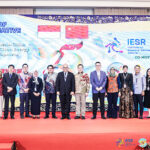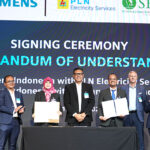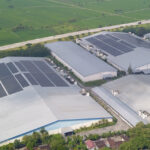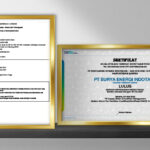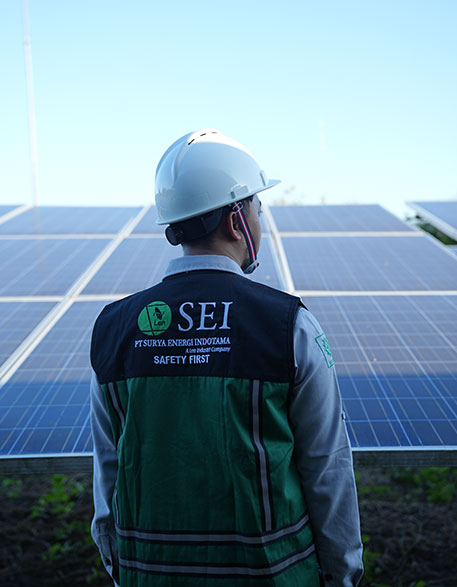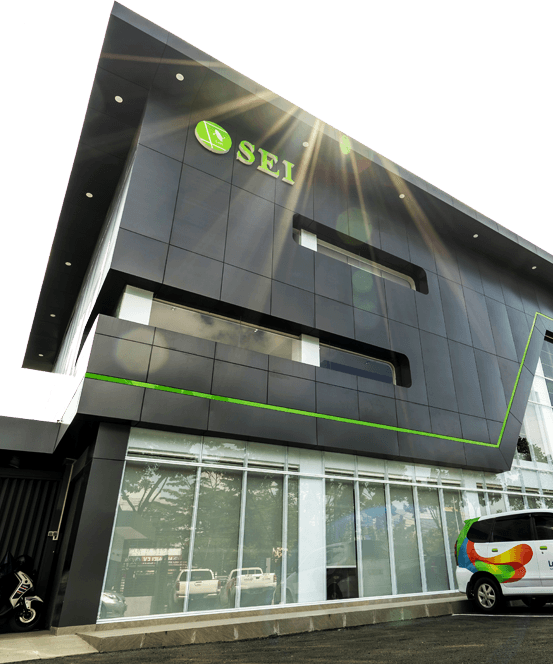Author: admin
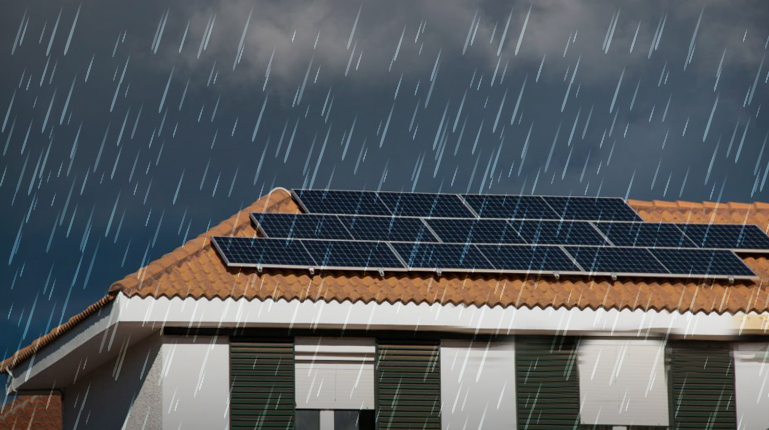
Can Solar Power Plants Still Work During Rainy Conditions?
Solar Power Plants (PLTS) are one of the renewable energy solutions that are increasingly in demand because they are environmentally friendly and have abundant energy sources, namely sunlight. However, one question that often arises is: can PLTS still work when the weather is cloudy or rainy?
Before going any further, let's first find out how PLTS itself works. Yes, as we know, PLTS works by converting solar energy into electrical energy through solar panels containing photovoltaic cells. These cells capture photons from sunlight and convert them into direct current (DC). This electricity is then converted into alternating current (AC) by the inverter so that it can be used by household electrical devices or distributed to the electricity grid.
However, the question arises, when conditions are cloudy or even rainy, does it affect the performance of the PLTS, here is the explanation.
PLTS performance is influenced by the intensity of sunlight received by the solar panels. On a sunny day, solar panels work with optimal efficiency because sunlight directly reaches the surface of the panel. However, when the weather is cloudy or rainy, the intensity of sunlight decreases because it is blocked by clouds.
However, PLTS can still generate electricity in cloudy or rainy conditions, but with lower efficiency. This happens because sunlight is still scattered and reaches the surface of the panel, although in smaller quantities. The decrease in efficiency usually ranges from 10-25%, depending on the level of cloud density and the type of solar panel used.
Not only that, besides affecting efficiency, rain also has its own benefits for PLTS. Rainwater helps clean the surface of the solar panel from dust, dirt, or other pollutants that can reduce the absorption of sunlight. Thus, clean solar panels can work optimally again after the rain stops.
With that, the question "Can PLTS still work in rainy conditions?" The answer is "Yes" PLTS can still work in rainy conditions, although its efficiency decreases compared to when the weather is sunny. However, this decrease does not make PLTS completely non-functional. With good maintenance and technology that continues to develop, PLTS remains a reliable choice for generating environmentally friendly electrical energy, even in areas with weather that is not always sunny.
The use of energy storage batteries is also a solution to ensure that electricity supply is always available at any time, regardless of weather conditions. That way, PLTS remains a promising investment for the future of sustainable energy.
Together with SEI, let's switch to renewable energy!
Berita Lainnya
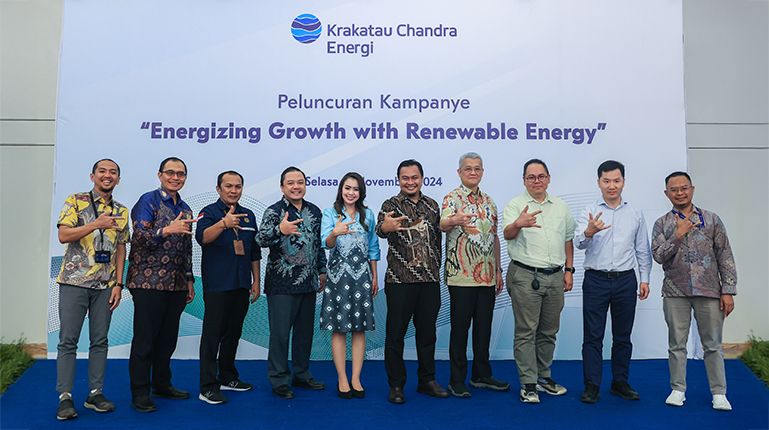
Synergy of SEI and KCE: Together Advancing Green Industry through the “ENERGIZING GROWTH WITH RENEWABLE ENERGY” Campaign
Jakarta (05/11/2024) – Ridwan Kurnia, Marketing and Business Development Director of PT Surya Energi Indotama (SEI) on behalf of all Commissioners, Directors and Employees congratulated the launch of the “ENERGIZING GROWTH WITH RENEWABLE ENERGY” campaign launched by its strategic partner, Krakatau Chandra Energi (KCE).
The campaign, which focuses on the implementation of green energy, was launched at the Media Gathering and interactive Talkshow event held to coincide with the commemoration of National Electricity Day. This initiative demonstrates KCE’s commitment to supporting industrial growth through the utilization of New Renewable Energy (EBT).
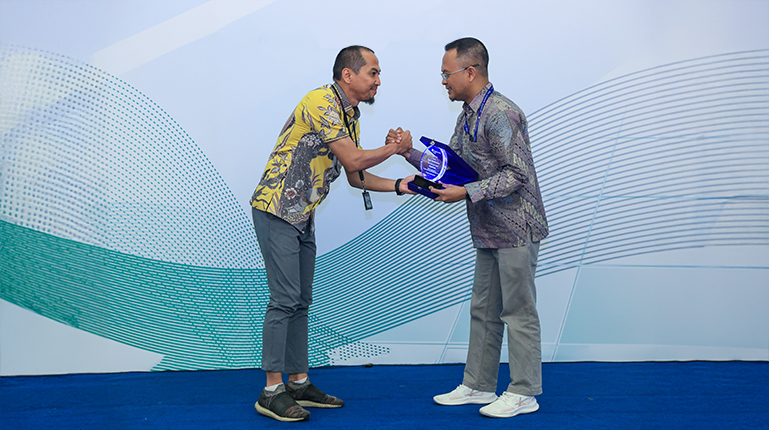
The launch event was attended by various important figures, including Hasan Maksum, ST., who represented the Directorate General of Electricity of the Ministry of Energy and Mineral Resources of the Republic of Indonesia as the Keynote Speaker and main resource person and Ridwan Kurnia, Director of Marketing and Business Development of PT Surya Energi Indotama (SEI) who on that occasion was selected as a guest speaker. In this talk show, they discussed the importance of collaboration between parties in realizing a sustainable energy future in Indonesia.
SEI expressed its pride in the long-standing collaborative relationship with KCE and appreciated the strategic steps of this campaign in echoing the use of renewable energy in the industrial sector. Ridwan Kurnia stated, "We see this campaign as an important step in strengthening Indonesia's position towards energy independence through sustainable solutions. Synergy between government, industry, and society is the key to accelerating the adoption of renewable energy."
Through this campaign, KCE and SEI hope to inspire concrete steps in the energy transition, in line with the national commitment towards cleaner energy. KCE also expressed its readiness to support the industry in Indonesia on its journey towards more environmentally friendly growth, in line with the shared vision to realize a greener and more sustainable industry.
Berita Lainnya
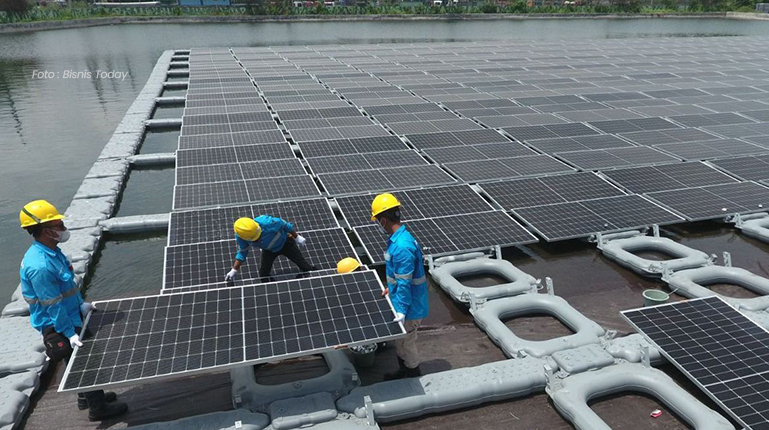
Getting to Know the Advantages and Disadvantages of Floating Solar Power Plants in Indonesia
Floating photovoltaic power plants (PLTS) are an innovative solution that is currently growing rapidly in Indonesia as an alternative to environmentally friendly power plants.
Analysis by the Institute for Essentials Services Reform (IESR) states that the potential for floating PLTS in Indonesia reaches 28.4 Gigawatts (GW). This potential is spread across 783 reservoirs and lakes, each of which has a minimum potential of 1 Megawatt (MW).
It is no wonder that the government is targeting to build 60 floating PLTS in Indonesia while simultaneously pushing the target of a power plant mix from EBT of 23 percent by 2025.
In terms of construction, the installation of floating photovoltaics is equipped with hollow plastic buoys that are designed to withstand extreme weather conditions and the potential for disruption to cables connected to electrical installations on land.
However, because of its character which is installed in water, floating PLTS also has negative impacts. Here are the advantages and disadvantages of floating PLTS (floating photovoltaics).
Advantages of Floating Solar Power Plants
- Space Utilization
By utilizing the water surface, floating solar power plants save land that is usually used for agriculture, settlements, or industry. This is very relevant in Indonesia, where large land areas are often difficult to obtain for large-scale energy projects.
- Increase Solar Panel Efficiency
Water has a natural cooling effect that can lower the temperature of solar panels. This lower temperature helps increase panel efficiency, as solar panels are more efficient at lower temperatures.
- Reduce Water Evaporation
Panels floating on reservoirs or lakes can reduce the rate of water evaporation, which is beneficial for areas prone to drought. This can be a major advantage for water management in Indonesia, especially in areas with long dry seasons.
- Minimize the Impact on Land Ecosystems
Because floating solar power plants are placed in water, this development will not disturb habitats or convert land areas, which are important in maintaining biodiversity in land ecosystems.
- Renewable and Clean Energy Source
Like solar power plants in general, floating solar power plants do not produce greenhouse gas emissions or air pollution. This contributes to Indonesia's target of reducing carbon emissions and achieving cleaner energy.
Disadvantages of Floating Solar Power Plants
- Higher Installation Costs
Additional infrastructure and components, such as buoys, anchors, and waterproof electrical systems, increase the installation costs of floating solar power plants compared to conventional solar power plants on land.
- More Complicated Maintenance
Floating solar power plants require more complicated maintenance due to the higher risk of corrosion in wet environments and difficult access. Waterproof equipment also requires more costs and more specialized maintenance procedures.
- Impact on Aquatic Ecology
Shades from solar panels and the presence of structures above the water can reduce sunlight entering the water, which may disrupt aquatic ecosystems, especially in terms of photosynthesis of aquatic plants.
- Vulnerable to Weather and Nature
Extreme weather such as strong winds, waves, or earthquakes can damage floating PV installations. The system must be designed very robustly to withstand Indonesia's diverse weather, especially during the rainy season or in areas prone to earthquakes.
- Potential Disturbance to Water Activities
Reservoirs and lakes are often used for other activities, such as irrigation, fisheries, or tourism. Floating PV can reduce the area that can be used for these activities or interfere with fishing boat routes.
Floating PV offers great potential as a renewable energy solution in Indonesia, especially to optimize the use of space and preserve water resources.
Realistically, however, floating PV is unlikely to replace large-scale power plants or the increasing trend of onshore PV anytime soon. But it is very possible that they can fill an important complementary role, adding capacity that is currently lacking.
Let's move towards renewable energy with SEI!
Berita Lainnya
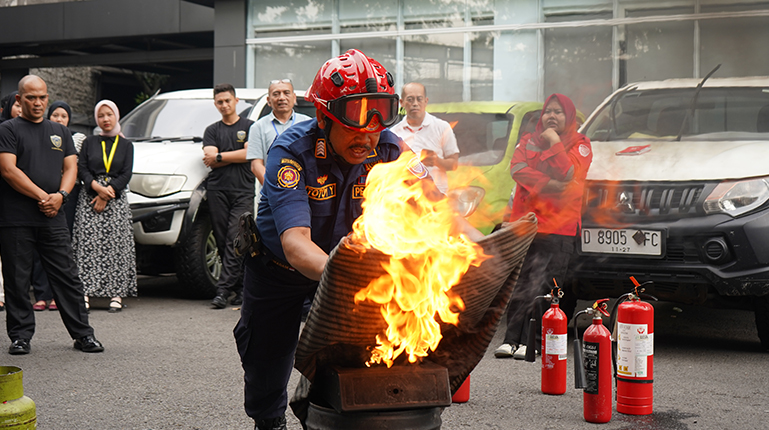
Prevent Fires, SEI Holds Fire Simulation
Bandung (10/31/2024) – In order to ensure the equalization of knowledge regarding emergency response during fires and work accidents in the office environment, SEI held an In House Training on Occupational Health and Safety (K3) and fire simulations. The activity which took place at the SEI office for 2 days was attended by representatives of SEI employees.

On the first day's agenda, participants were given knowledge about first aid for work accidents guided by Hery Munandar from PMI Bandung City. Participants were trained on how to handle injuries such as broken bones, cardiac arrest, and victim evacuation. Hery emphasized the importance of a deep understanding of quick actions that can save lives in emergency situations.
Not only that, participants were also given basic knowledge about fires starting from types, tools, handling methods and rescue techniques in the event of a fire which were delivered directly by Totoy, Sugiantoro, and the team from the Bandung city fire department.
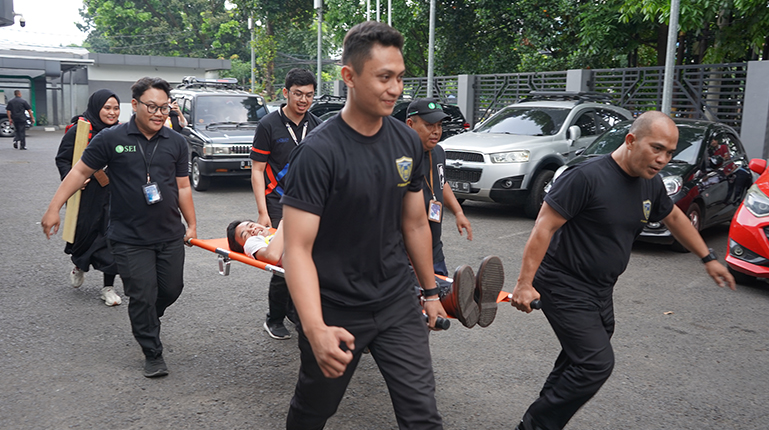
The fire simulation was the culmination of this activity, which involved the entire company community. The emergency response team swiftly gave a positive response to the incident from the fire simulation, starting from the firefighting team, evacuation team and first aid team. The implementation of this fire simulation is a realization of the training that has been given to be applied in the company environment.
"With this training, we hope that employees have good knowledge and understanding of the risks of accidents at work, especially fires. The contribution of all employees is our success in forming a competent emergency response team in the SEI environment," said Elyana, one of the representatives of the HSE team.
Not only increasing knowledge from the technical side, this activity also instills a sense of responsibility to maintain the safety of yourself and your colleagues. SEI is committed to creating a strong safety culture in the work environment, because….Safety Is SEI Priority!
Berita Lainnya
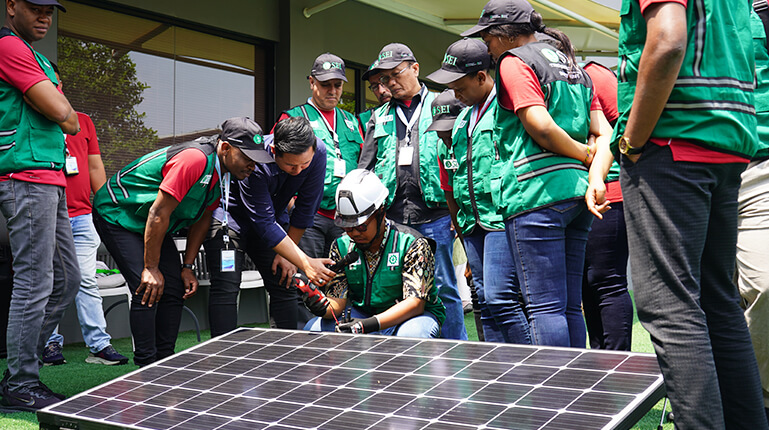
SEI Provides Training on Solar PV System Operation & Maintenance for 5 African Countries
Bandung (25/10/2024) – In order to support the implementation of the Annex G20 Leader Declaration, PT Surya Energi Indotama (SEI) together with the Ministry of Energy and Mineral Resources (ESDM) Center for Human Resource Development for Electricity, New, Renewable Energy, and Energy Conservation (PPSDM KEBTKE) has conducted competency improvement training in the field of solar energy. This activity took place in two countries, namely Turkey and Indonesia, which was attended by five participating countries from the African region, namely Namibia, Mozambique, Senegal, Tanzania, and Sudan.
The training aims to strengthen the capacity and knowledge of participants about renewable energy technology, especially solar energy, which is increasingly important in the current era of climate change. In this training, Eric Agustian as Technology Analyst and Riza Ramadhan, from the Operation & Maintenance function provided an in-depth understanding of the Operation & Maintenance of solar PV systems.
Participants not only gain knowledge delivered theoretically, but are also equipped with direct practice in the field so that participants can understand activities ranging from operating and maintaining solar PV systems, so that they can apply the knowledge gained in their respective countries.

Positive response from the entire group for the opportunity to learn from the experiences and best practices shared by SEI. They hope that this training can help their countries in developing solar energy potential and contribute to reducing carbon emissions and increasing access to clean energy.
With the implementation of this training, it is hoped that international cooperation in the development of renewable energy can be strengthened, and can encourage sustainable economic growth in the African region.
Berita Lainnya
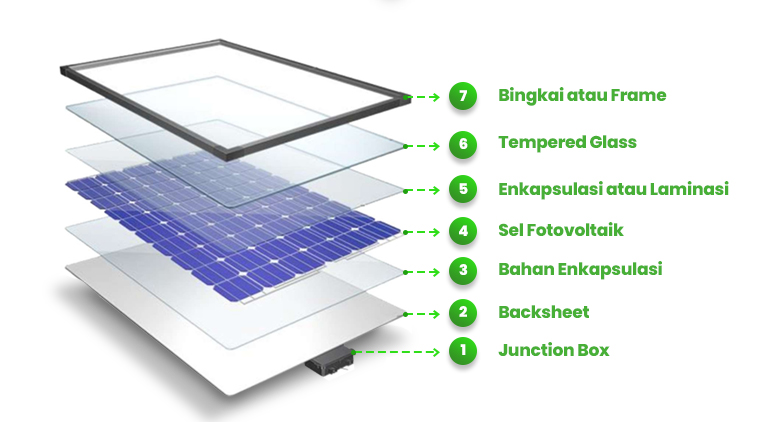
Getting to Know the Layers on Solar Panels and Their Functions
In the era of transition to renewable energy, solar panels are increasingly popular as a solution to meet environmentally friendly electricity needs. However, many are still unfamiliar with the components contained in solar panels and their functions.
In fact, the components of the Solar Panel are a unit of the device so that it can function properly. In order to become an applicable tool, other parts of the solar panel are needed. Here are some layers of the solar panel and their functions:
1. Junction Box
Junction box is a safety box used for electrical circuits or electrical cable connections. The use of a junction box aims to ensure that the cable or network connection on the cable is not disturbed by activity and is not dangerous.
2. Backsheet
The back layer of the solar panel that serves to protect the photovoltaic cells from moisture and environmental impacts. This layer also helps maintain the structural integrity of the panel.
3. Encapsulation Materials
It is a material that protects cells from direct contact with the environment and mechanical forces that can damage thin cells.
4. Sel Fotovoltaik
It is the main component of a photovoltaic module. This cell is made of a semi-conductor material that captures sunlight and converts it into electricity. The cells are connected in series to obtain a higher total voltage through the busbar wire. The material used for photovoltaic cells is generally silicon, such as polycrystalline and monocrystalline.
5. Encapsulation or Lamination
Layer between photovoltaic cells and protective glass. Lamination is used to prevent mechanical damage to photovoltaic cells and isolate the voltage from photovoltaic cells to other parts of the module. Usually the laminate sheet uses ethylene-vinyl acetate (EVA) material.
6. Tempered Glass
Protecting photovoltaic cells from the environment and ensuring the rigidity of the panel. Due to this function, protective glass takes up the highest proportion of the total weight of the photovoltaic module.
7. Frame
Usually made of Anodized Aluminum to prevent corrosion. The frame is installed at the end of the manufacturing process, so it has a function to ensure the strength of the panel.
Therefore, it can be concluded that Solar Panels are a combination of various components that work together to produce electrical energy from sunlight. By understanding the function of each component, we can better appreciate this technology and its potential to reduce dependence on fossil fuels. The application of solar panels is not only economically beneficial, but also makes a positive contribution to the environment.
Together with SEI, let's move towards renewable energy!
Berita Lainnya
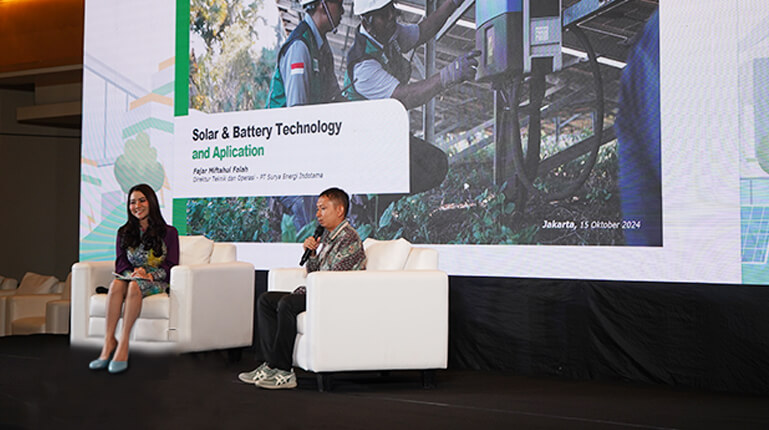
Presenting Battery Applications in Solar Power Systems, Fajar Becomes Speaker at Interactive Dialogue Initiated by IESR
Jakarta (15/10/2024) – Director of Engineering and Operations, Fajar Miftahul Falah had the opportunity to attend and actively participate in an interactive dialogue initiated by the Institute for Essential Service Reform (IESR). This event raised the theme "Breaking the Walls: The Future of Indonesia's Solar Energy and Energy Storage Innovation" which was attended by participants from various circles, including renewable energy industry players.
The event took place with high enthusiasm, offering an in-depth discussion on innovation in solar energy and energy storage technology or batteries in Indonesia. In this session, Fajar shared his views on the challenges and opportunities facing the renewable energy sector, as well as the strategic steps that need to be taken to advance technology and infrastructure in the PLTS system.
Participants actively interacted, asked questions and shared experiences, making this dialogue not only informative but also inspiring. With various perspectives shared, this event succeeded in adding new insights into the development of renewable energy in Indonesia and facilitating collaboration between industry players.
Fajar emphasized the importance of innovation and cross-sector collaboration to achieve clean energy targets in the future. This dialogue is an important momentum in encouraging awareness and real action for energy transition in Indonesia.
This event is expected to be a sustainable platform for discussions on policies and best practices in developing renewable energy in the country.
Berita Lainnya
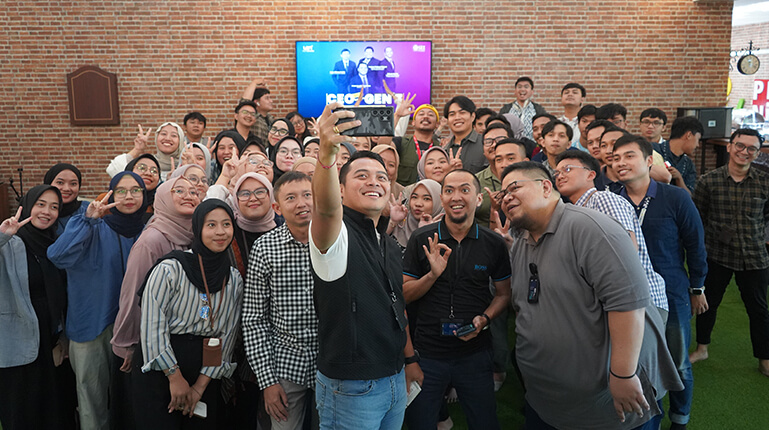
To build closeness between employees, SEI holds a “CEO Talk with Gen Z” event
SEI has just held a CEO Talk event with the theme "If You Don't Know, You Don't Love". This event aims to bridge communication between Generation Z and the company's board of directors.
Attended by I Made Sandika Dwiantara, President Director of PT Surya Energi Indotama, Yuntoro Prakoso Wibowo, Director of Finance, HR and Risk Management, Fajar Miftahul Falah, Director of Engineering and Operations and Ridwan Kurnia, Director of Marketing and Business Development.
All participants looked very enthusiastic in this event. They not only listened to the directors' career experiences, but also actively asked about tips for maintaining motivation at work. One of the interesting topics discussed was how the directors divide their time between work and other activities outside of work, providing valuable insights for the participants.
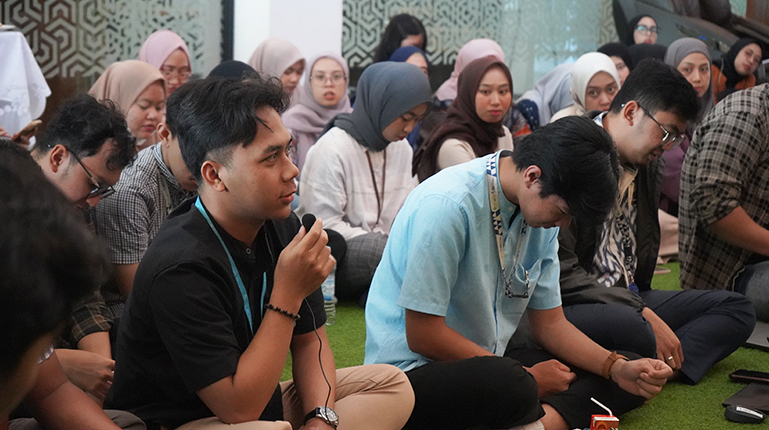
The event was relaxed, exciting, friendly and certainly became an effective platform to get to know each other, share experiences, and strengthen the relationship between the younger generation and company leaders. Hopefully, this interaction can create better collaboration in the future and a new spirit for the company.
PT SEI … Go… Fight… Win…!
Berita Lainnya
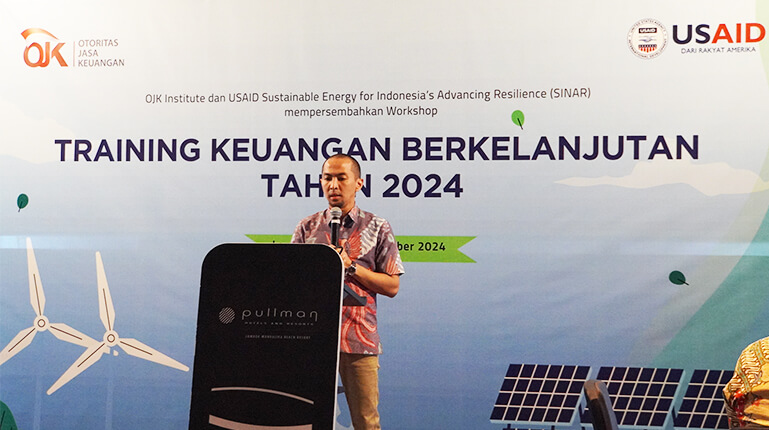
As a Speaker, Ridwan Discusses Renewable Energy Business and Sustainable Finance
Having the opportunity to attend and actively participate in the workshop initiated by the Financial Services Authority and USAID Sustainable Energy for Indonesia’s Advancing Resilience (SINAR), Director of Marketing and Business Development, Ridwan Kurnia was present to captivate in giving a presentation session related to “Navigating Challenges and Opportunities in Renewable Energy Generation: Key Risks in Developing RE Projects
The presentation discussed the company’s business activities including opportunities for solar energy absorption in Indonesia to the milestones to achieve the Net Zero Emission target in 2060.
Not only talking about opportunities, Ridwan also discussed thoroughly the challenges and risks faced by the company in developing this new renewable energy industry.
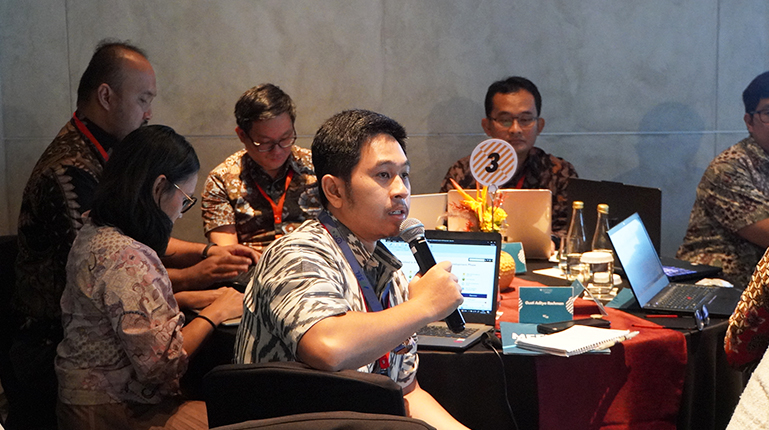
The audience seemed to listen to the material presented enthusiastically until the discussion and question and answer session went lively. One of the Workshop participants said that with the discussion related to renewable energy and SEI business, they gained new knowledge and opened their horizons about the current renewable energy company.
Berita Lainnya
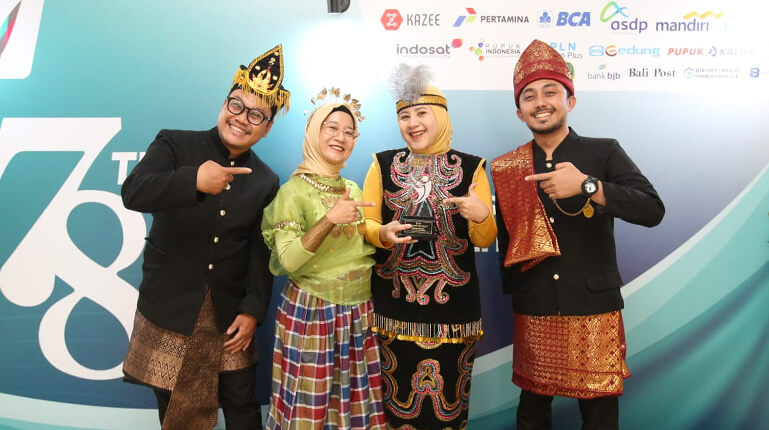
Excelling in Publication and Media Programs, SEI Successfully Wins Two Trophies
It was a source of pride for the SEI family when SEI managed to bring home two proud trophies, namely the Award Trophy as the Company with the Best Publication at the 2024 Association of Economic Journalists Business Awards (IWEB Awards 2024) and the Award Trophy for the Media Relations Awards 2024 Category, Sub-Category for the Best Media Relations Program at the 78th United Press Company Awards.
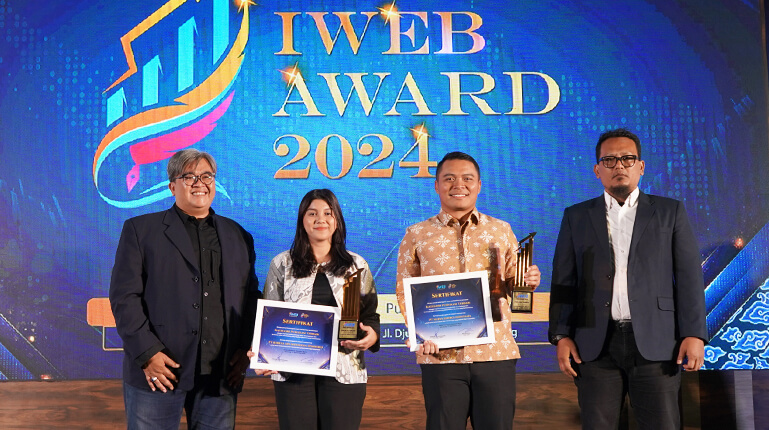
SEI was considered successful in its efforts to communicate well to the mass media and the public and also participated in supporting the national economy, especially through publications, so that it was finally selected as the recipient of the Best Publication award from the 2024 IWEB Award alongside PT Kereta Api Indonesia (Persero) which managed to bring home the trophy in the same category.
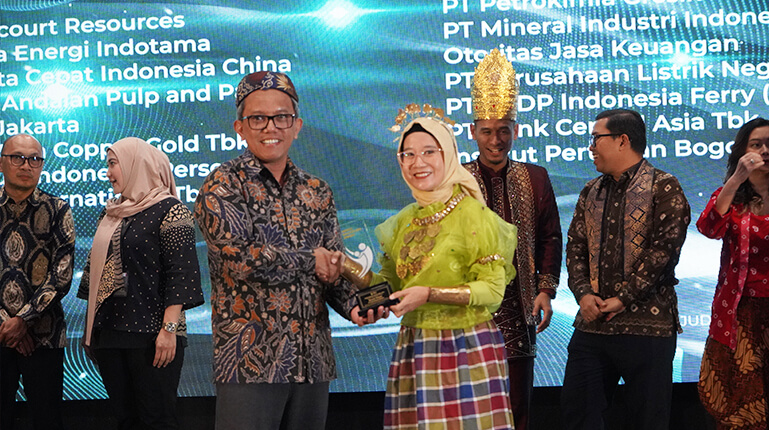
The next award came from the oldest press company organization in Indonesia, namely the Press Company Union (SPS). Carrying out the Humanist Collaboration program between companies and the Mass Media, SEI has succeeded in creating good and healthy relations that have played a role in building a positive image and reputation so that SEI was selected as the winner of the 2024 Media Relations Awards Category Sub-Category Best Media Relations Program along with other leading companies, namely PT Pupuk Indonesia (Persero), PT Mineral Industri Indonesia (Persero), Bank Central Asia, Tbk, PT Astra International, Tbk, etc.
"Hopefully the company's success this time can be an inspiration for other corporate communities to continue to actively contribute, convey positive, precise and accurate information that will have an impact on the wider community," said I Made Sandika, President Director of SEI. **
